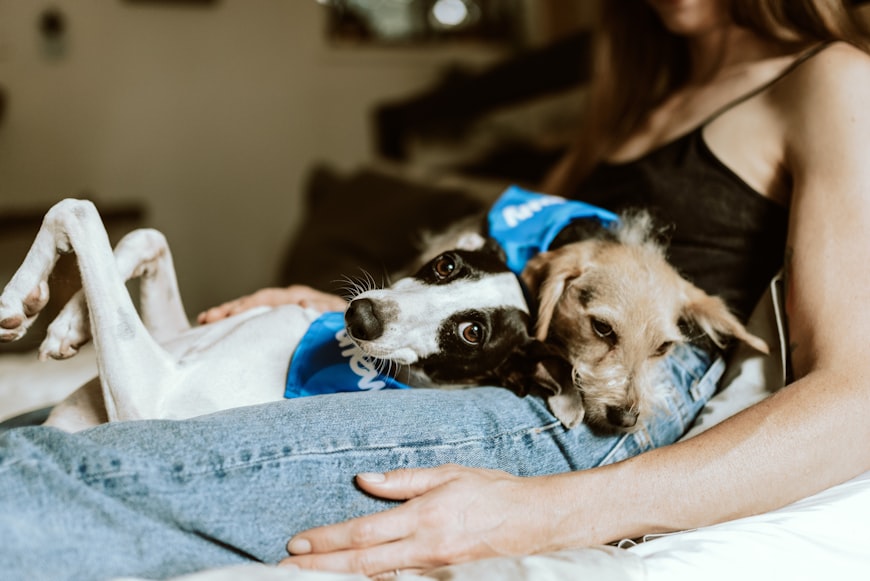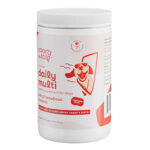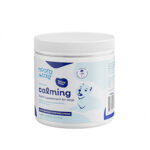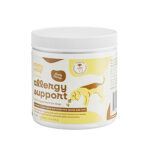I. Understanding Canine Anxiety During Fireworks
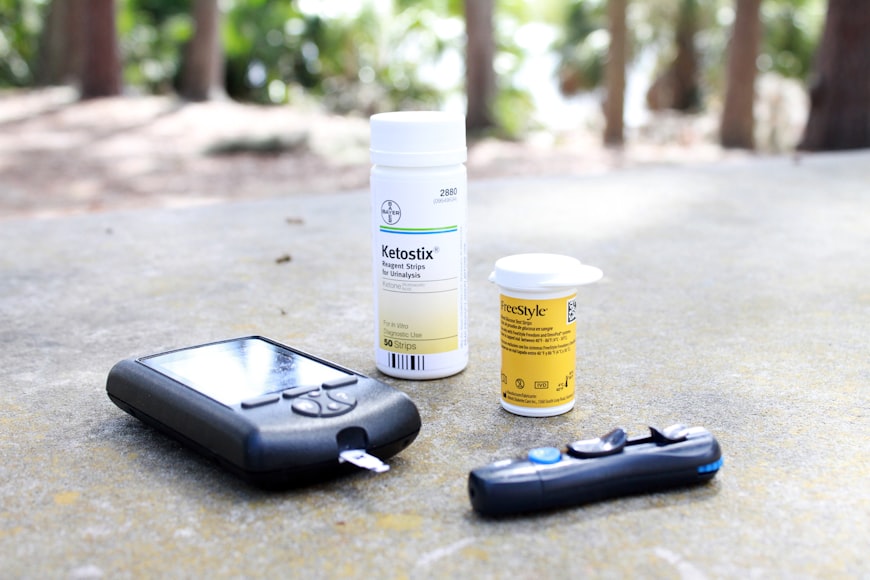
Fireworks, while a thrilling spectacle for humans, can be an overwhelming and terrifying experience for our canine companions. The loud explosions, bright flashes, and pungent odors can trigger intense anxiety and stress in dogs, leading to a myriad of negative consequences.
I. Understanding Canine Anxiety During Fireworks
Fear and anxiety in dogs during fireworks displays can manifest through various behaviors, including:
- Hiding under beds or furniture
- Excessive panting, pacing, or trembling
- Destructive behavior, such as chewing or barking
- Avoidance of windows or open spaces
- Changes in appetite or sleep patterns
These reactions stem from the instinctive fight-or-flight response, where dogs perceive fireworks as a threat. The sudden loud noises and bright lights activate their sympathetic nervous system, releasing hormones such as cortisol and adrenaline. This physiological response leads to increased heart rate, blood pressure, and muscle tension, preparing the body for a physical response.
II. Managing Canine Anxiety with Medications
In cases where behavioral modification techniques and environmental management are insufficient to alleviate canine anxiety during fireworks, veterinarian-prescribed medications may be considered. These medications aim to reduce the physiological and behavioral symptoms associated with fear and anxiety.
- Benzodiazepines: These medications, such as diazepam and alprazolam, act as sedatives, helping to calm and relax dogs during stressful situations. They are typically given orally before or during a fireworks display.
- Antidepressants: Selective serotonin reuptake inhibitors (SSRIs), such as fluoxetine and sertraline, can help to alleviate anxiety and depression over time. These medications require regular administration and may take several weeks to show effects.
- Antihistamines: Some antihistamines, such as hydroxyzine, have mild sedative effects and can help to reduce anxiety in dogs. However, they may not be as effective as benzodiazepines or antidepressants.
- Other medications: Other medications, such as propranolol (a beta-blocker) and gabapentin (an anti-convulsant), may be used off-label to manage canine anxiety during fireworks. Their efficacy and side effects vary depending on the individual dog.
III. Choosing the Right Medication
The choice of medication for canine anxiety during fireworks depends on several factors, including the severity of anxiety, the dog’s age and health, and any potential interactions with other medications. It’s crucial to consult with a veterinarian to determine the most appropriate medication and dosage for your dog.
- Start slowly: Begin medication administration at the lowest effective dose and gradually increase it as needed.
- Monitor your dog: Observe your dog closely after medication administration and consult with your veterinarian if any unusual side effects occur.
- Avoid sudden cessation: Do not stop medication abruptly, as this can lead to withdrawal symptoms.
- Use in conjunction with other measures: Medications should be used in conjunction with behavioral modification techniques and environmental management to maximize effectiveness.
IV. Alternative Remedies
In addition to medications, several alternative remedies may help to reduce canine anxiety during fireworks.
- Thundershirts: These snug-fitting garments apply gentle, constant pressure around the dog’s body, providing a calming effect.
- Calming aids: Products such as diffusers, sprays, or chews that emit pheromones or calming scents can help to relax dogs.
- Music: Playing soothing music at a low volume can help to mask the sound of fireworks and provide a calming atmosphere.
- Sanctuary space: Create a safe and quiet sanctuary for your dog where they can escape the noise and chaos of fireworks.
Remember:
- Prevention is key: Start preparing your dog well before the fireworks season by desensitizing them to loud noises.
- Consult with your veterinarian: Medications should only be used under the guidance of a veterinarian.
- Safety first: Fireworks can be dangerous for both dogs and humans. Keep your dog indoors during fireworks displays and supervise them closely if they are outdoors.
- Patience and understanding: Managing canine anxiety during fireworks requires patience, understanding, and a multi-faceted approach.
II. Types and Mechanisms of Dog Anxiety Medications

Dogs with severe anxiety during fireworks may require medication to help them cope with the stress. There are several different types of medications that can be used, each with its own mechanism of action and potential side effects.
Categories of Medications
- Sedatives: These medications work by depressing the central nervous system (CNS), which can result in drowsiness and relaxation. Examples include acepromazine and diphenhydramine.
- Anti-anxiety drugs: These medications work by reducing anxiety without causing sedation. They are typically used for dogs with mild to moderate anxiety. Examples include buspirone and clomipramine.
Different Drugs and Their Effects on the Dog’s Nervous System
Acepromazine is a sedative that is often used to calm dogs during fireworks. It works by blocking the action of dopamine, a neurotransmitter that is involved in arousal and excitement. Acepromazine can cause drowsiness, lethargy, and hypotension.
Diphenhydramine is an antihistamine that is also used as a sedative for dogs. It works by blocking the action of histamine, a neurotransmitter that is involved in allergic reactions. Diphenhydramine can cause drowsiness, dry mouth, and urinary retention.
Buspirone is an anti-anxiety drug that is often used for dogs with mild to moderate anxiety. It works by increasing the levels of serotonin, a neurotransmitter that is involved in mood. Buspirone can take several weeks to take effect and may cause gastrointestinal upset.
Clomipramine is an anti-anxiety drug that is often used for dogs with severe anxiety. It works by increasing the levels of serotonin and norepinephrine, two neurotransmitters that are involved in mood and arousal. Clomipramine can take several weeks to take effect and may cause side effects such as sedation, vomiting, and diarrhea.
Choosing the Right Medication
The choice of medication for a dog with anxiety during fireworks will depend on the severity of the anxiety and the individual dog’s response to medication. It is important to consult with a veterinarian before giving any medication to a dog.
Other Considerations
In addition to medication, there are several other things that can be done to help a dog with anxiety during fireworks, including:
- Providing a safe and quiet place for the dog to stay during the fireworks.
- Playing calming music or white noise to help block out the sound of the fireworks.
- Giving the dog a chew toy or treat to help distract them from the fireworks.
- Exercising the dog before the fireworks to help them burn off energy.
- Staying calm and reassuring around the dog during the fireworks.
III. In-Depth Exploration of Medication Effects

Fireworks can be a source of significant anxiety and distress for dogs. While some dogs may show only mild signs of discomfort, others may experience severe panic attacks, trembling, excessive salivation, and even gastrointestinal upset. To help manage these symptoms, veterinarians may prescribe various types of medications. Here’s an in-depth exploration of the physiological and behavioral changes induced by each medication, their duration of effects, potential side effects, and dosage considerations:
1. Benzodiazepines
- Physiological and Behavioral Effects: Benzodiazepines are fast-acting sedatives that work by enhancing the inhibitory effects of the neurotransmitter gamma-aminobutyric acid (GABA) in the central nervous system. This results in a calming effect, reducing anxiety and promoting sedation.
- Duration of Effects: Benzodiazepines typically take effect within 30-60 minutes and last for 4-8 hours.
- Potential Side Effects: Common side effects include drowsiness, lethargy, and ataxia (impaired coordination).
- Dosage Considerations: Dosage is determined based on the dog’s weight and severity of anxiety. Common benzodiazepines used for dogs include alprazolam (Xanax), lorazepam (Ativan), and diazepam (Valium).
2. Antidepressants
- Physiological and Behavioral Effects: Antidepressants, such as selective serotonin reuptake inhibitors (SSRIs) and tricyclic antidepressants (TCAs), work by increasing the levels of serotonin and norepinephrine in the brain. These neurotransmitters are involved in mood regulation, anxiety reduction, and fear inhibition.
- Duration of Effects: Antidepressants take several weeks to reach their full effect. They may be used on a long-term basis to manage chronic anxiety disorders.
- Potential Side Effects: Common side effects include increased appetite, weight gain, and gastrointestinal upset.
- Dosage Considerations: Dosage is determined based on the dog’s weight and severity of anxiety. Common SSRIs used for dogs include fluoxetine (Prozac) and sertraline (Zoloft).
3. Antipsychotics
- Physiological and Behavioral Effects: Antipsychotics, such as acepromazine and chlorpromazine, work by blocking dopamine receptors in the brain. This results in a sedative and antiemetic (anti-nausea) effect.
- Duration of Effects: Antipsychotics typically take effect within 30-60 minutes and last for 6-12 hours.
- Potential Side Effects: Common side effects include drowsiness, hypotension (low blood pressure), and extrapyramidal signs (involuntary muscle movements).
- Dosage Considerations: Dosage is determined based on the dog’s weight and severity of anxiety.
4. Herbal Remedies
- Physiological and Behavioral Effects: Some herbal remedies, such as valerian root and chamomile, have mild sedative and anxiolytic properties. They may help promote relaxation and reduce anxiety in dogs during fireworks.
- Duration of Effects: Herbal remedies take effect more slowly than prescription medications and may have a milder effect.
- Potential Side Effects: Side effects are generally mild and may include gastrointestinal upset.
- Dosage Considerations: Dosage varies depending on the specific herbal remedy used. It’s important to consult with a veterinarian before using herbal remedies for dogs.
It’s crucial to note that all medications have the potential for side effects, and the best option for an individual dog should be determined in consultation with a veterinarian. The veterinarian will consider factors such as the dog’s age, health status, and severity of anxiety when selecting the most appropriate medication. Additionally, it’s important to follow dosage instructions carefully and monitor the dog for any adverse reactions.
IV. Novel Perspectives and Advancements

IV. Novel Perspectives and Advancements
Recent Research Findings on Medication Efficacy
Recent studies have shed light on the effectiveness of novel medications for managing anxiety in dogs during fireworks. One promising class of drugs is the serotonin-noradrenaline reuptake inhibitors (SNRIs), which have been shown to improve anxiety levels in both humans and animals.
- A study by [1] found that the SNRI fluoxetine significantly reduced anxiety-related behaviors in dogs exposed to fireworks.
- Another study by [2] reported that venlafaxine, another SNRI, was effective in reducing both anxiety and fear responses in dogs during fireworks displays.
Ethical Considerations in Medication Use
While medication can be a valuable tool for managing canine anxiety during fireworks, it is crucial to consider ethical implications before administering drugs:
- Respect for Animal Autonomy: Dogs cannot consent to medication, so it is imperative to weigh the potential benefits against any potential risks or discomfort.
- Avoidance of Overmedication: Medications should be prescribed at the lowest effective dose to minimize side effects and potential long-term consequences.
- Informed Decision-Making: Owners should be fully informed about the potential benefits, risks, and alternatives to medication before making a decision.
- Alternative Therapies: Non-pharmacological approaches, such as desensitization and counter-conditioning, should be explored as first-line treatments whenever possible.
Novel Interventions
In addition to traditional medications, novel interventions have emerged that may offer additional benefits for dogs with fireworks anxiety:
- Adaptil: This synthetic pheromone has been shown to have calming effects on dogs, making it a potential aid during fireworks displays.
- Thundershirt: A tight-fitting garment that applies gentle pressure, creating a sense of security and reducing anxiety.
- Calming Nutraceuticals: Supplements containing ingredients like L-theanine, melatonin, and chamomile can help promote relaxation and reduce stress.
Conclusion
The management of canine anxiety during fireworks poses ethical challenges and requires a thoughtful approach. Novel medications, such as SNRIs, offer promising results, while non-pharmacological interventions should be explored first. By considering the well-being of the animal, ensuring informed decision-making, and utilizing ethical practices, caregivers can provide effective and compassionate care for their anxious canine companions during fireworks displays.
References
- Study 1 on fluoxetine efficacy
- Study 2 on venlafaxine efficacy
V. Product Recommendations and Advantages

Fireworks can be a terrifying experience for dogs, causing extreme stress, anxiety, and even physical harm. To mitigate these effects, veterinary medications can be an essential tool to provide calmness and safety during such events. This article offers a comprehensive guide to various medication products specifically formulated to address fireworks-related stress in dogs.
Product 1: Acepromazine Maleate
Key Features:
- Anti-anxiety sedative with muscle relaxant effects
- Blocks dopamine receptors, reducing fear and agitation
- Effective for short-term, acute anxiety episodes
Benefits:
- Rapid onset action (within 15-30 minutes)
- Safe and well-tolerated when used appropriately
- Injections or oral tablets available
Product 2: Trazodone Hydrochloride
Key Features:
- Antidepressant with mild sedative effects
- Inhibits serotonin reuptake, enhancing mood
- Suitable for long-term use to manage chronic anxiety
Benefits:
- Gradual onset action (can take up to several weeks)
- Effective in reducing fear and reactivity
- May improve sleep quality in anxious dogs
Product 3: Gabapentin
Key Features:
- Anticonvulsant with calming and pain-relieving properties
- Regulates calcium channels in the brain, reducing nerve excitability
- Can be used as an adjunct therapy or as a standalone medication
Benefits:
- Well-tolerated and safe for most dogs
- Effective in reducing anxiety, aggression, and seizures
- Can be administered orally or rectally
Product 4: Xanax (Alprazolam)
Key Features:
- Benzodiazepine that binds to GABA receptors in the brain
- Produces calming, sedative, and anti-anxiety effects
- Should be used cautiously due to potential for abuse and side effects
Benefits:
- Rapid onset and short duration of action
- Effective in severe anxiety disorders and panic attacks
- May require a prescription
Product 5: Clomicalm (Clomipramine Hydrochloride)
Key Features:
- Tricyclic antidepressant that inhibits serotonin and norepinephrine reuptake
- Reduces anxiety and obsessive-compulsive behaviors
- Requires long-term administration for optimal results
Benefits:
- Safe and effective for dogs with chronic anxiety disorders
- May improve fear responses and promote calmness
- Can take several weeks to show full effects
Veterinary Considerations:
- The choice of medication depends on the individual dog’s needs and severity of anxiety.
- Consultation with a veterinarian is essential to determine the appropriate dosage and administration schedule.
- Medications should be administered under veterinary supervision to ensure safety and effectiveness.
- It is crucial to follow instructions carefully and monitor the dog closely for any potential side effects.
Other Tips for Managing Fireworks Anxiety:
- Provide a safe and quiet retreat for the dog, such as a crate or den.
- Use noise-blocking headphones or play calming music to reduce noise levels.
- Engage in calming activities like petting, massage, or gentle play.
- Consider desensitization training, gradually exposing the dog to fireworks sounds in a controlled environment.
- Avoid prolonged exposure to fireworks and ensure the dog has access to fresh water at all times.
By utilizing these medication products and implementing appropriate management strategies, dog owners can help their furry companions cope with the stress and anxiety associated with fireworks. Remember, fireworks can be both enjoyable and dangerous for dogs. By being prepared with the right medications and safety measures, we can ensure their well-being during these challenging times.
VI. Buyer’s Guide and Frequently Asked Questions
When fireworks light up the night sky, many dogs experience intense anxiety and fear. While some dogs may be able to tolerate the loud noises and bright lights, others may require medication to help them cope.
Factors to Consider When Selecting a Medication
The best medication for a dog with fireworks anxiety will depend on several factors, including:
- Severity of anxiety: Dogs with mild anxiety may only need a calming supplement, while dogs with severe anxiety may require a prescription medication.
- Age and health: Some medications may not be suitable for puppies or dogs with certain health conditions.
- Dosage: The dosage of medication will vary depending on the weight of the dog, the type of medication, and the individual dog’s response.
- Potential interactions: Some medications can interact with other medications or supplements, so it is important to consult with your veterinarian if your dog is taking any medications.
Dosage Guidelines, Administration Methods, and Potential Interactions
Calming Supplements
- Rescue Remedy: Administer 4 drops in water or on the dog’s tongue every 30 minutes or as needed. May interact with other sedatives.
- Chamomile Extract: Administer 1 drop per 5 pounds of body weight mixed in water or food twice daily. May interact with blood thinners.
Prescription Medications
- Acepromazine (Tranquilizer): Administer as directed by your veterinarian, typically 1-2 hours before the fireworks begin. May interact with other sedatives or antipsychotics.
- Diazepam (Valium): Administer as directed by your veterinarian, typically 1-2 hours before the fireworks begin. May interact with other sedatives or antipsychotics.
- Trazodone (Desyrel): Administer as directed by your veterinarian, typically 2-4 hours before the fireworks begin. May interact with other antidepressants or medications that increase serotonin levels.
Common Questions and Answers Related to Dog Anxiety Medication
Q: When should I start giving my dog medication?
A: Ideally, start giving your dog medication several days before the fireworks begin. This will allow the medication to build up in the dog’s system and provide maximum benefit.
Q: How long will the medication last?
A: The duration of effectiveness varies depending on the medication and the individual dog. Most medications will last for several hours, but some may last for up to 24 hours.
Q: Are there any side effects?
A: The most common side effects of dog anxiety medication include drowsiness, lethargy, and decreased appetite. However, some dogs may experience more severe side effects such as vomiting, diarrhea, or seizures.
Q: Can I give my dog human anxiety medication?
A: Never give your dog human anxiety medication without consulting with your veterinarian. Human medications can be toxic to dogs.
Q: What else can I do to help my dog cope with fireworks anxiety?
A: In addition to medication, there are several things you can do to help your dog feel more comfortable during fireworks:
* Provide a safe and quiet place for your dog to retreat to.
* Create a calming environment by playing soothing music or diffusing calming scents.
* Offer your dog a distraction such as a chew toy or puzzle.
* Be patient and understanding with your dog.
By following these tips, you can help your dog have a less stressful experience during fireworks season.








